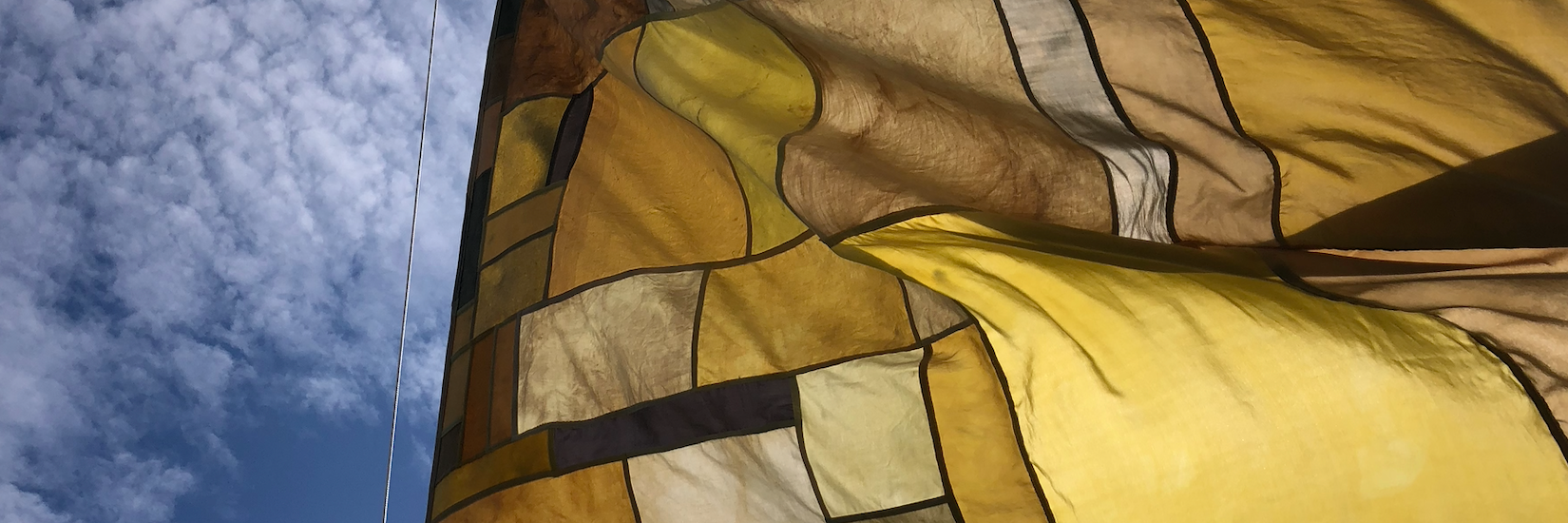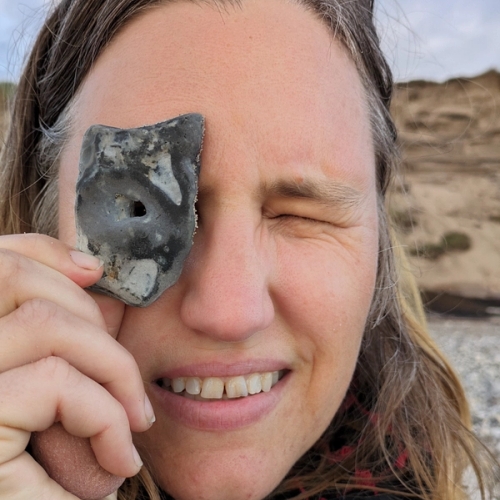

Marie Skeie
Kunst i offentlig rom, Tekstil
E-post
marieskeie@gmail.com
Telefon
94276651
Nettside
www.marieskeie.com
Sted
Ålvik
Sosiale medier
Marie Skeie er basert i Hardanger og har bodd i Japan, Brasil og Skottland. Hun har sin utdanningsbakgrunn fra KHiB med fordypning i tekstil og en bachelorgrad i sosiologi fra Universitetet i Bergen. Hun har sin master i kunst og offentlig rom ved KHiO og fordypning i kuratorpraksis i offentlig rom ved KORO. Nå jobber hun med en doktorgrad ved Universitetet i Sørøst Norge der hun jobber hun med forskningsprosjektet Colours of Gaza der hun tar med sin kunstneriske praksis med plantefarging inn i en barnehage i Gaza. Hun har erfaring som kunstner, forsker, kurator og produsent, ofte med prosjekter i offentlig rom. Interessen for kollektive prosesser og kunstnerisk samarbeid har ført til at hun enten har initiert eller deltatt i prosjekter som Her og der (2017 – pågående), The Stitch Project (2012- pågående) og (F)jorden (2022). Som kunstner er Marie Skeie opptatt av det å jobbe med hendene, med materiale og landskapet rundt oss. Hennes kunstnerskap er mellom kunst og håndverk, kunnskap og estetikk, aktivisme og etikk. Hun jobber praktisk og teoretisk med land crafting gjennom plantefarging og vev. Å jobbe med land crafting påvirker vår relasjon og kunnskap om omgivelsene rundt oss. De siste årene har hun jobbet med plantefarging i Gaza, gjennom forskningsprosjektet Colours of Gaza i en barnehage og gjennom eget arbeidet. For tiden jobber hun med sorg og håp i arbeidene "If we go back there is no colours" og andre pågående arbeider.
2012
The Stitch Project
The Stitch Project started July 2012 at the Riddu Riddu festival.The Stitch project is an international art collaboration with focus on dialogue, knowledge, dissemination, politics and crafts through …
2024
If we go back there is no colours
Dette flagget består av alle biter med plantefarget tekstiler jeg har fra Gaza. Det tar utgangspunkt i en SMS: My house is almost empty The smell of death in all The stench of death is everywhere I wi…
2024
Vandring med Gaza. Om farge, mujawaarah og mannhelgi
Lydvandring og felles plantefarging av flagg. Laget i forbindelse med Jubileumsåret Gulatinget 2024. Lydsporet finnes her: https://soundcloud.com/marie-skeie-807768024/vandring-med-gaza
2022
Signals
De maritime signalflaggene i verket i Signaler (2022) er farget i silke med planter som brukes og vokser i Gaza og flagg i ull farget med planter fra rundt og i Hardangerfjorden. Plantens betydning, k…
2020
Hypericum
An installation with fiber and glass. Sand grains and straw. The fragile and the resilient. Glass spheres are enclosed in twisted slings. The fragile in defencelessness. Willingness to defend and prot…
2019
Notes from unsettled fields -our ruins lie ahead, behind is the willows
Plants, water, silk, wool and stones. Time, light and heat. Color that dissolves and is captured. The choice between the silkworm and the cocoon. Long fibers that have grown through wind and burning s…